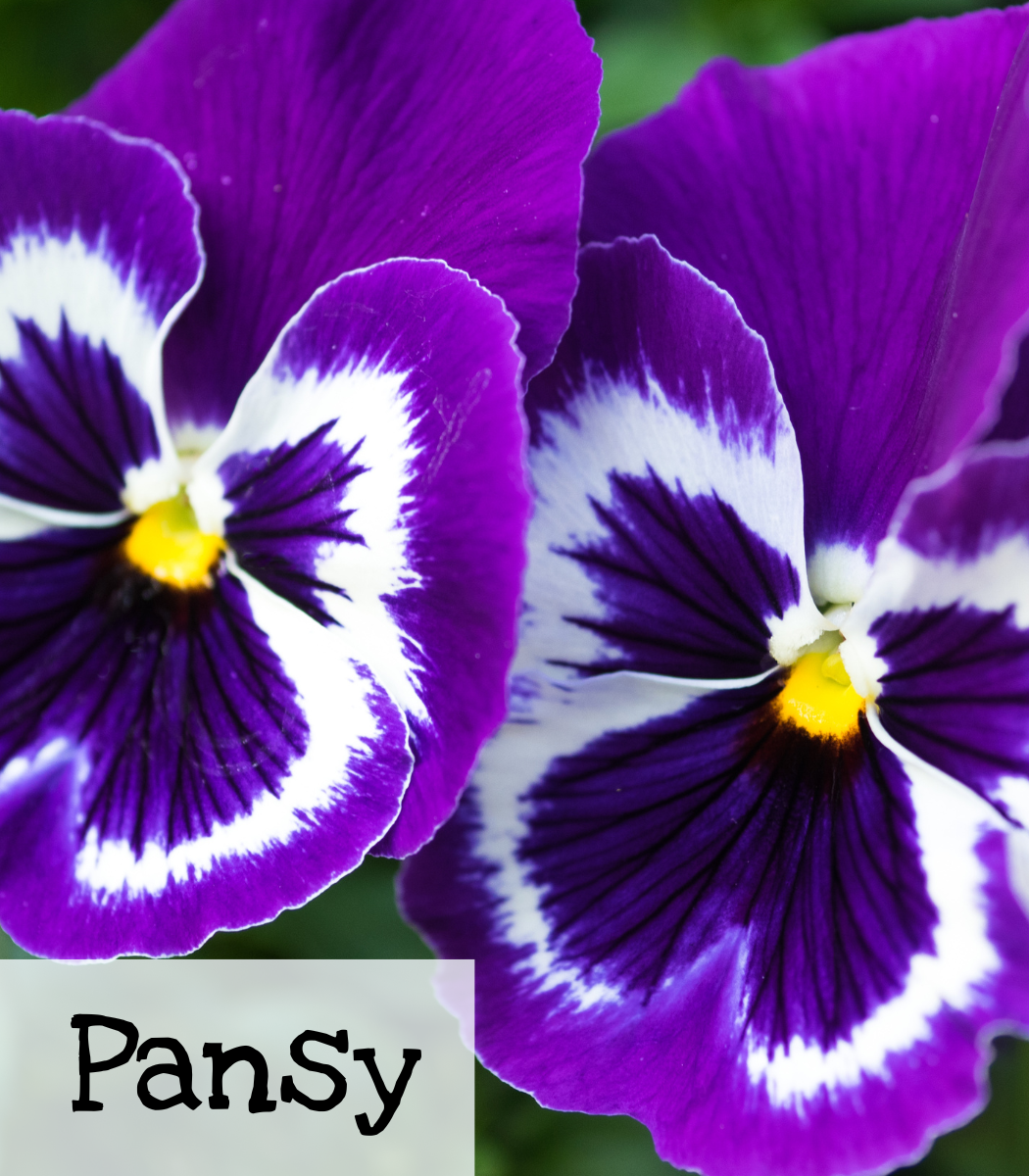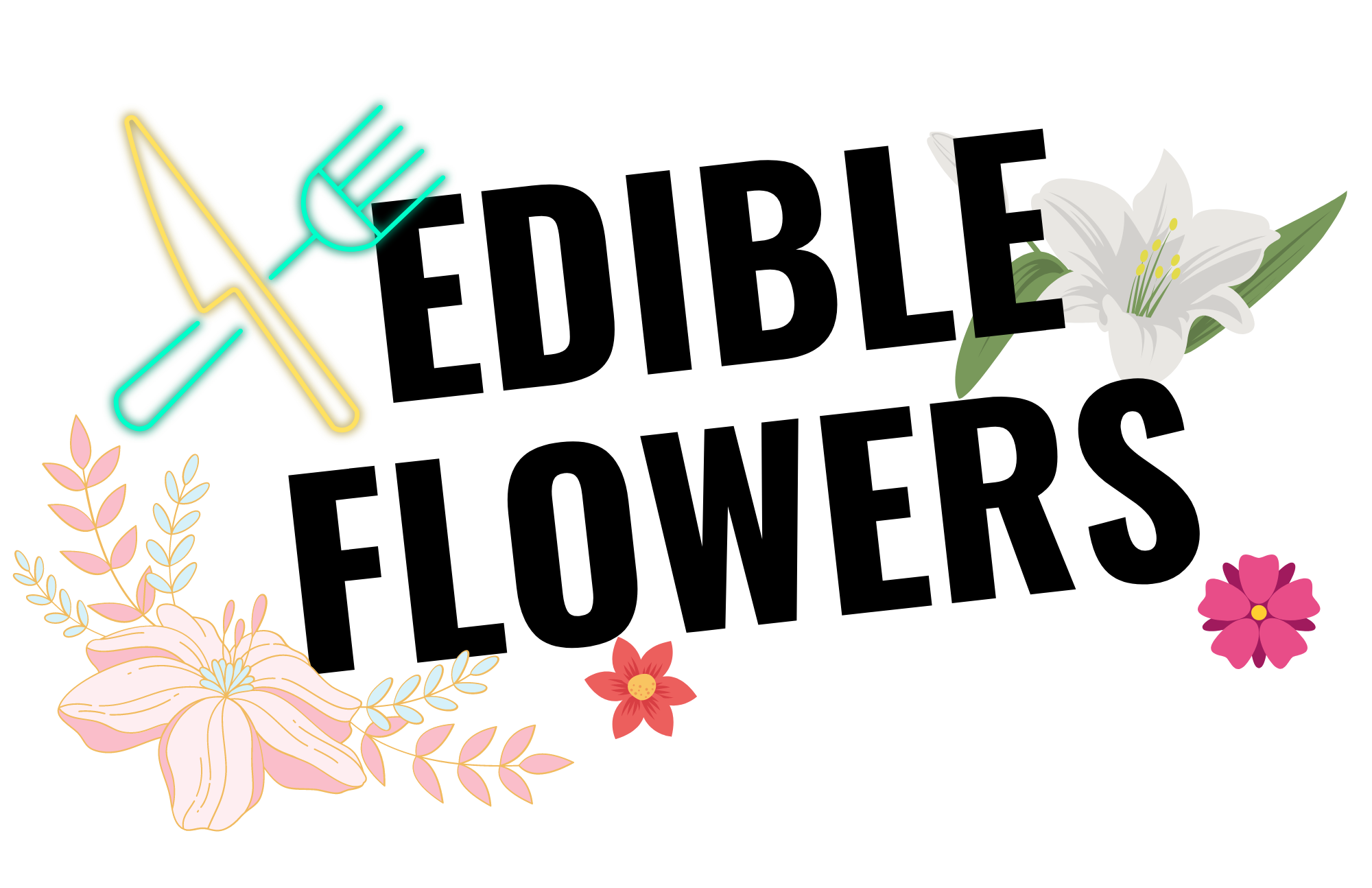
Pansy
Pansy is a colorful frosty-hardy winter flower. It can survive temperatures into the single digits and then come back once temperatures warm up. The delicate blooms are edible and beautiful garnishes.
|
Celestial Blue; Florial Days Morning Dew; Historic Florist; Super Beaconsfield |
|
Viola x wittrockiana |
|
Intermediate |
|
Intermediate |
|
2 years if properly stored |
|
Historic Florist: Perennial (zones 4-9) All others are Annual |
|
10-20 days |
|
65-70 F |
|
2 Weeks Cold Stratification |
|
1/2 inch |
|
Black Devil: 6” 8-10” tall 3” flower heads |
|
Needs dark to germinate Part shade |
|
85 days |
|
June and July |
|
No |

Growing Tips



When to Start Pansies
Spring: Not recommended by the UGA for GA. Cold stratify pansy seeds for 2 weeks. Start cold stratification 12-14 weeks before the last frost in the spring. (January-February for GA.) After the 2 weeks place the trays under the grow lights. Transplant after hardening off and after the danger of frost has passed.
Fall: Recommended by the UGA for GA. Cold stratify the seeds for 2 weeks. Start cold stratification 12-14 weeks before the transplant date. (End of July/Beginning of August for GA.) After the 2 weeks place the trays under the grow lights. Transplant after hardening off when the soil temperatures are between 45-65 F. (“Grow zone 6b & 7a September 15-October 1. Grow zone 8a & 8b October 15-November 1”)1
Jefferson, GA, is now Grow Zone 8. The USDA updated the plant hardiness zones in November 2023. Any chart older than this is out of date. To find your grow zone and learn more about the updates made from the prior 2012 map, visit planthardiness.ars.usda.gov.
How to Grow
Pansies grow best in soil temperatures that are between 45-65 F. When soil temperatures are below 45 F, the roots will go dormant. If planted when the soil temperature is not within the ideal range the plants will be stunted, flower poorly, or turn yellow.
Fall is the ideal time to transplant pansies in GA. Starting from seed requires a little planning to have them ready for fall transplant. The entire process, from seed to transplantable seedlings, takes 12-14 weeks.
Pansy seeds need 2 weeks of cold stratification to help the seeds break dormancy.
For fall planting, work backward 12-14 weeks from when the soil temperature is between 45-65 F. This will be mid-summer. (End of June/beginning of July for GA.) Sow seeds into cells or pots to a depth of 1/2 inch, as pansies need complete darkness to germinate. Place the cells or pots into a plastic bag. Support, such as a seed tray or cardboard, may be needed to keep the pots from tipping. Then place them in the refrigerator for 2 weeks. Keep the soil moist but not soggy throughout this process.
After the 2 weeks are up, remove the pansies from the refrigerator. And place them under the grow lights. The lights don’t have to be turned on until after the seedlings emerge. Pansies like a soil temperature around 65 F for best germination. As they are part shade plants, you will need to adjust the lighting on the grow lights. Either dim the grow lights, if they have that function, or create more space between the seedlings and the light, so the light isn’t as strong.
Start hardening off the seedlings 1-2 weeks before the transplant date. Space plants 9-12 inches apart.
Care
Pansies like part shade (6 hours of direct sunlight). In cooler climates, they will tolerate full sun. Transplant into part shade beds or containers. They like rich, moist, slightly acidic, and well-draining soil. Work in organic material into the bed or container to create rich soil. Use mulch to keep the soil cool and moist.
Bottom water to help reduce disease and fertilize as needed. Pansies are heavy feeders and will need to be fertilized throughout the winter months. Keep the soil moist, but NOT soggy. Pansies greatly dislike wet feet. Space the plants 9-12” apart.
“Fertilization requirements of pansies differ from other types of seasonal color. Avoid using fertilizers containing high amounts of slow-release ammoniacal nitrogen. These fertilizers are commonly used on summer annuals but are not recommended for pansies. High rates of ammoniacal nitrogen can cause pansy stems to stretch and become succulent during warm fall weather, which weakens plants and makes them more susceptible to winter injury. Ammoniacal nitrogen also is slow to be absorbed by the plants during the winter months when soil temperatures drop below 45 ° F. Pansies can literally starve during the winter months even though the soil contains high amounts of ammoniacal nitrogen.“1
Deadhead to keep the plants blooming longer. Also trim branches to encourage branching, compact growth, and encourage flowering. Annual pansies will die off in the heat of summer. Slugs can be a problem.
Freeze Protection
When the temperatures drop to 25 F and below, pansies will wilt and turn grayish. This is normal. Where the danger lies is when the air temperatures drop to 20 F and below for several hours. The soil can freeze, damaging the root ball. The roots aren’t able to absorb water from the frozen soil, and they will dehydrate and die. The University of GA recommends placing 2-4 inches of mulch, like pine straw, over the entire bed–plants and all. When these cold temperatures pass, gently remove the mulch from the plants. There are special frost protection fabrics that can be used, too.
Seed Saving

Isolation Distance
Pansies will cross with other pansies. Insect dependent for pollination. Isolate 1/2 mile to prevent cross-pollination.
Instructions
Pansy will often self-sow.
Select healthy, robust plants free of any signs of disease or insect infestation for seeds. Seeds carry the traits of the parent plant. Choose plants that exhibit the traits you wish to preserve. Consider bloom size, color, and shape, as well as blooming time.
Allow the biggest and healthiest blooms to mature on the plant. Cover the seed head with a fine-mesh bag as soon as the flower petals shrivel and die. Wait to remove from the plant until the once-golden center turns brown and the seed head has formed. Use an elastic band to hold the bag in place. This prevents seeds from spilling onto the soil before harvest.
Flower heads that have gone to seed may look dry, but still, be moist on the inside. Dry seeds in a cool, dry location with good air circulation for one week before removing seeds and debris. Separate plant debris from the seeds by removing the mesh bag. Place a piece of paper or tray under the seed heads. Gently rub the dry heads until they loosen and fall removing as much debris as possible. Gently blow across the paper to remove the remaining debris. Store in a paper bag.
Features
- Container friendly
- Attracts pollinators
- Cold tolerant
- Good cut flower
- Ground cover
- Drought tolerant
- Deer resistant
- Good for borders
- Flowers are edible
- Black Devil: Heirloom. A bold black flower with a small yellow eye. Beautiful in containers, beds, and boarders. Small 6-inch tall plants.
- Celestial Blue: Heirloom. A sky blue pansy representing one of the rarest and most sought-after colors in the plant kingdom! God in pots, borders, and beds. Occasionally self-sows.
- Historic Florist: Heirloom. Perennial in zones 4-9 plants are short 8-inches tall. Flowers are a mix of shades from plum to bronze with canary yellow centers. Good for beds, borders, and containers.
- Beaconsfield: Heirloom. Giant 3-inch purple and white flower heads on compact plants.

Investing in a soil thermometer helps keep an eye on soil temperatures.
Look for the fertilizer that is best for pansies during the summer months. Most stores will not have a good selection during the “non-growing season.”
Keep some mulch on hand to protect the pansies when temperatures drop to 25 F and below.
You May Also Like:
Companion Planting: How to use flowers to help control pests.
Trap cropping: How to keep pests out of your main crop.
Sources:
Wade, Gary L. and Thomas, Paul A. Success with Pansies in the Winter Landscape: A Guide for Professionals. UGA Cooperative Extension Bulletin 1359, Reviewed October 2012.1 Extension.uga.edu
Rareseeds.com
Edenbrothers.com
Homeguides.sfgate.com
Gardeningknowhow.com
